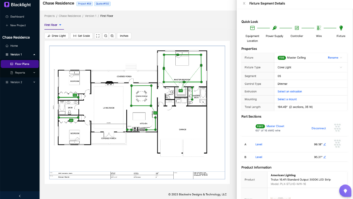How Industry Training Can, and Should, Improve

Dave Chace ([email protected]) is president of Training Allies, a CE-focused training firm in Philadelphia.
If you’re attending this month’s CEDIA EXPO, then there is a good chance you’re planning on attending some of the many training sessions offered by manufacturers and others. Maybe you are excited about the training, or maybe it is just part of your job. Either way, hopefully you will find the sessions both engaging and worthwhile. If not, then it is not just your right but your responsibility to say so. Otherwise, how will the training ever get better?
They Don’t Want to Waste Your Time
Industry training is a hit-or-miss proposition, often missing more than it hits. This is certainly not for lack of effort, however. Organizations spend a lot of time and money to provide training, and want very much for you to learn what they’re teaching so you can go out in the field and sell more of their products, or do your job more effectively. The last thing they want to do is waste your time.
Unfortunately, most companies don’t have a staff of training experts, and so they lack real expertise in adult education or the principles of learning. As a result, they continue to take the wrong approach to training, often mistakenly believing that the goal of training is to deliver as much information as possible within the allotted time. Consequently, the presenter races to cover a volume of facts–most of which aren’t critical and will be forgotten almost instantly.
In addition, organizations often make the mistake of picking the wrong person to present the training, typically basing their decision on whomever happens to know the most about the subject. Leading classroom training requires a very specific skill set–including a command of public speaking–to make the experience engaging and effective. Simply knowing a lot about a topic doesn’t automatically qualify someone to stand in front of a class and teach it.
So for the sake of everyone who will sit through a training session and wonder how much better it could be, here are some fundamental guidelines for great training.

So if the training you receive falls short of your expectations, don’t be shy. Take a moment to let those presenting the training know that you felt it could’ve been better, and why.
Focus on “Need to Know”
Our brains can only process a handful of concepts at one time. Furthermore, research has shown that regardless of whether information is delivered verbally or via printed material, our retention level is pretty much the same, assuming the facts are explained in similar fashion. Therefore, instead of trying to explain every little piece of information in the allotted time, less important, “nice to know” facts should be reserved for a well-structured printed handout, while valuable class time should be spent teaching only the most important concepts. This allows more time to explore questions and scenarios more thoroughly, and it increases the likelihood that everyone will understand these key concepts better to use more effectively later.
It’s a Two-Way Street
Great training should be an interactive experience. Good trainers are always promoting discussion–not just lecturing while the group sits quietly. There should be lots of opportunities for questions to be raised and explored; and a talented trainer knows how to foster constructive group discussion while keeping the conversation properly corralled and on track while not letting digressions derail the session. The best learning happens when we teach each other, and an interactive environment facilitates that capability.
Mix It Up
Training should stimulate a variety of senses, so real effort should be made to go beyond the traditional slideshow/lecture format. Better learning happens when we use more of our senses, like sight, touch, and even smell. Therefore, relevant “props” should be provided whenever possible–real items that the class can hold in their hands and examine. Additionally, we learn better when we move, so opportunities should be provided to get up and move around, perhaps to explore educational elements around the room or to form breakout groups. Also, trainers should understand that our typical attention span is only about 8-10 minutes, so the training should be shifting gears continuously to keep everyone’s attention focused.
If the training you receive falls short of your expectations, don’t be shy. Take a moment to let those presenting the training know that you felt it could’ve been better, and why. Likewise, if the session was terrific, make sure to tell them what you liked, so they know to keep doing it.







